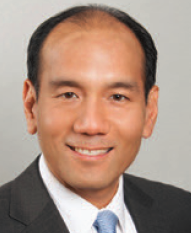The term derives from Italian, quaranta giorni, or 40 days. As the plague ravaged European cities in the 14th century, the practice was put into place to protect coastal cities. Ships arriving in Venice from ports deemed to be infected were required to remain at anchor for 40 days before docking.
In the United States, authority for instituting a quarantine was bestowed on the Centers for Disease Control and Prevention in 1967, and while this power wasn’t used in this pandemic, by mid-March 2020, we had essentially entered our first nationwide quarantine. Nearly everything about our daily lives changed, with three apparent overarching themes.
• Fear. To date, fear has been the strongest and most consistent emotion. Most of our patients are in high-risk categories. Despite any office-level protocols to minimize risk, they and their families are, rightfully, scared.
Doctors and support staff are also rightfully anxious for a host of reasons. It’s stressful to consider that every patient may have the virus and that if we lapse in respecting contact precautions, we may be the unwitting agent who infects a host of patients, potentially becoming the equivalent of the next super spreader. Simultaneously, balancing home-schooling for many doctors and staff adds another unprecedented dynamic of tension.
• Uncertainty. There has been broad geographic variability in the impact of COVID-19 on retina practices. Some practices have shuttered, furloughing or laying off large proportions of staff with an unclear trajectory for restarting. Most have experienced dramatic reductions in patient volumes while continuing to care for patients who need ongoing intravitreal injections and selected surgeries.
Perspectives on appropriate use of personal protective equipment, now ingrained in our lexicon as PPE, have been notably contentious, exacerbated by the lack of adequate supplies, incomplete data to drive local institutional policies, and shortage of accurate and efficient viral testing.
• Adaptation. Retina was largely defined by in-person meetings, lots of them. These have now essentially disappeared for the foreseeable future, and we’ve been immersed in a virtual word. As we navigate the likes of Zoom and GoToMeeting, we’ve learned the intricacies of this ecosystem, including virtual backgrounds, camera placement and chat functions. More heroically, in some of the hardest hit regions, ophthalmologists have transitioned to serving in ERs or general medical floors.
As of early May, some regions started to relax restrictions to reverse the economic devastation. Undercurrents of fear and uncertainty that have defined our darkest days are giving way to hope and a brighter outlook.
The resilience and courage we’ve witnessed in our colleagues from Seattle to New York to Louisiana inspire us to continue to care for our patients in the midst of this new and evolving normal of paranoia and contagion.
Our world is changed. In these times, and hopefully more so in the times to come, we must look out for, lend a hand to and encourage each other. Stay well. RS
 |




